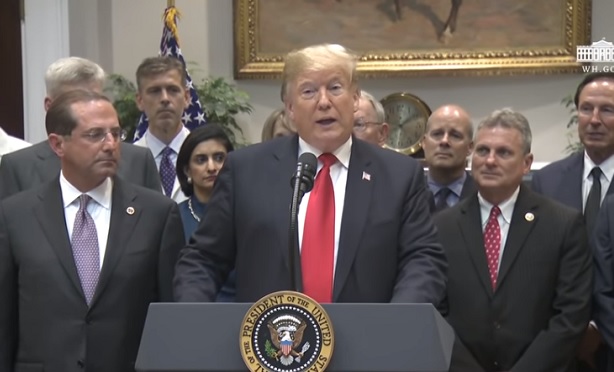
 President Donald Trump (Photo: White House)
President Donald Trump (Photo: White House)
The administration of President Donald Trump is forging ahead with efforts to revamp an Affordable Care Act program that could let each state change how its version of ACA health coverage access programs works.
Agencies today unveiled new guidelines for states that want to use the ACA Section 1332 State Innovation Waiver program.
In the past, under the administration of former President Barack Obama, federal regulators set tight limits on waiver use. States have used waiver authority mainly to set up state-run reinsurance programs for the individual major medical market.
(Related: ACA Revamp Provision: Feds Emphasize Limits)
Officials at the U.S. Department of The Treasury, the U.S. Department of Health and Human Services (HHS), and the Centers for Medicaid and Medicaid Services (CMS) say they now want to take a different, more flexible approach, and to promote use of products such as association health plan coverage and short-term health insurance.
Trump administration officials have been talking about making those sorts of changes to the Section 1332 waiver program since March 2017, when Tom Price, Trump's first HHS secretary, announced an ACA waiver program reboot.
A preview copy of the 34-page PDF document is available here.
The official version is set to appear in the Federal Register Wednesday.
For a look at seven facts about the new waiver program guidance that might be of interest to insurance agents and brokers, read on.
1. The Section 1332 waiver program has a new name.
The Trump administration will be calling it the State Relief and Empowerment Waiver (SREW) program.
2. SREW application reviewers will have a strong preference for proposals that favor private-sector solutions.
In the past, Section 1332 waiver program drafters did not mention whether they preferred government-run health programs or private insurance programs.
Some lawmakers who have created ACA alternative bills and ACA change people's have emphasized that they wanted to give each state the flexibility to meet local needs.
In the new SREW guidance, officials evidence that they want to promote more cost-effective health coverage, a lighter burden for the federal taxpayer, and use of private-sector solutions.
"For example," officials write, "states should consider eliminating or reducing state-level regulation that limits market choice and competition in order to reduce prices for consumers and reduce costs to the federal government, as part of their section 1332 waiver applications."



